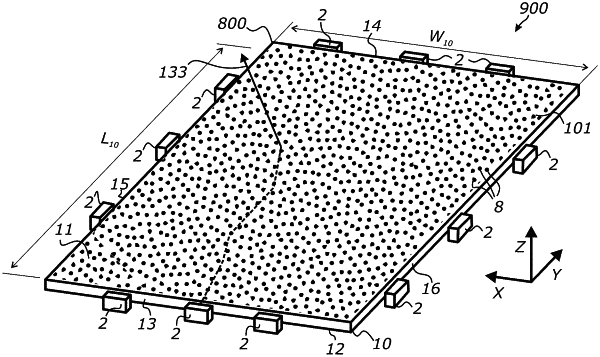| CPC G02B 6/0041 (2013.01) [G02B 6/0055 (2013.01); G02B 6/0065 (2013.01); G02B 6/0003 (2013.01); G02B 6/0056 (2013.01)] | 20 Claims |

|
1. A wide-area waveguide illumination system, comprising:
an optical waveguide formed by a thin sheet of an optically transmissive material having a generally uniform thickness and comprising a first broad-area surface, an opposing second broad-area surface, and a light input edge;
one or more solid-state light sources optically coupled to the light input edge; and
a plurality of light extraction areas distributed over an area of the optical waveguide according to a two-dimensional pattern and separated from one another by separation areas,
wherein a first one of the plurality of light extraction areas is located at a first distance from the light input edge and comprises a first area-distributed pattern of light extraction surface structures which are configured to distribute light from the first broad-area surface and the second broad-area surface, wherein a second one of the plurality of light extraction areas is located at a greater second distance from the light input edge and comprises a second area-distributed pattern of light extraction surface structures configured to distribute light from the first broad-area surface and the second broad-area surface, wherein a density of the light extraction surface structures within the first area-distributed pattern is less than a density of the light extraction surface structures within the second area-distributed pattern, and wherein at least some of the light extraction surface structures within the first area-distributed pattern are formed by discrete surface microstructures spaced apart from one another by distances which are greater than sizes of the discrete surface microstructures and at least five times less than a width of the separation areas.
|